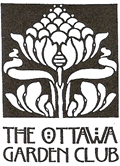By Mary Pratte
This week in the garden the long border is overrun with Corydalis, species name unknown. All I know is that it is terribly invasive, but the bees and other critters LOVE it. At this time of the year there is little in bloom, so a huge swath of Corydalis is like a long buffet table for our little buzzing friends out there.
The spurred flowers of Corydalis
Bergenia is just starting to send up little pink flowers which will be held on tall stems above the large shiny leaves.
Bergenia
Hellebores are coming into their own, blooms first, and often facing down toward the ground. Lots of gardeners suggest planting them on a hillside so you can see the bloom. There are many new hybrids which face up...worth searching for. If you look at the 'flower' you will see that the actual flower is deep inside, with nectaries, and the coloured 'petals' are really bracts, or modified leaves which serve to attract pollinators to the actual flower. (Think Poinsettia with a small flower surrounded by red bracts.) Shiny, green lobed leaves come later on. On some hellebores they are almost evergreen in our climate, while others are not. I usually leave the leaves on over winter and tidy them up come spring.
Hellebores
Numerous woodland plants are almost ready to bloom...trying to finish flowering before an overhead canopy of leaves blocks too much light...Uvularia (Merrybells), Sanguinaria (bloodroot), Erythronium (Trout lily) are growing quickly, while my Hepatica has been putting on a quiet, but mighty, little show in the sunshine...at only about 4-5 inches tall, it gets a bit lost, but I know where it is, and look for its delicate, ephemeral blooms followed by softly hairy leaves every year, and It never disappoints!
Hepatica





